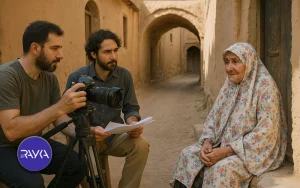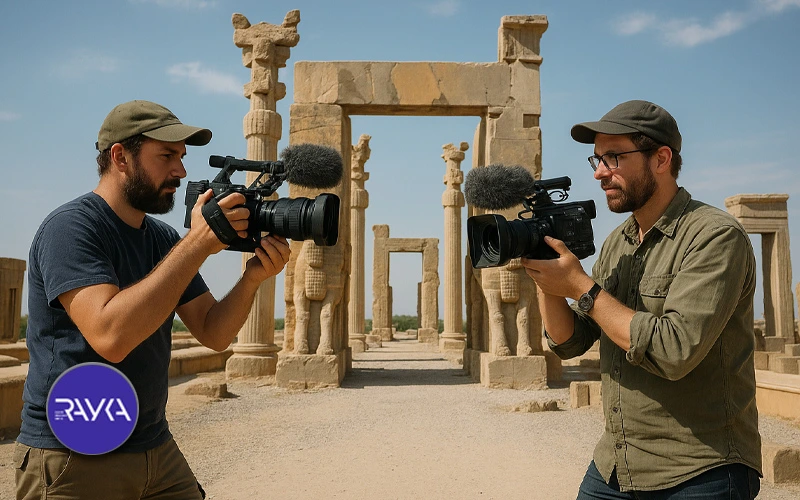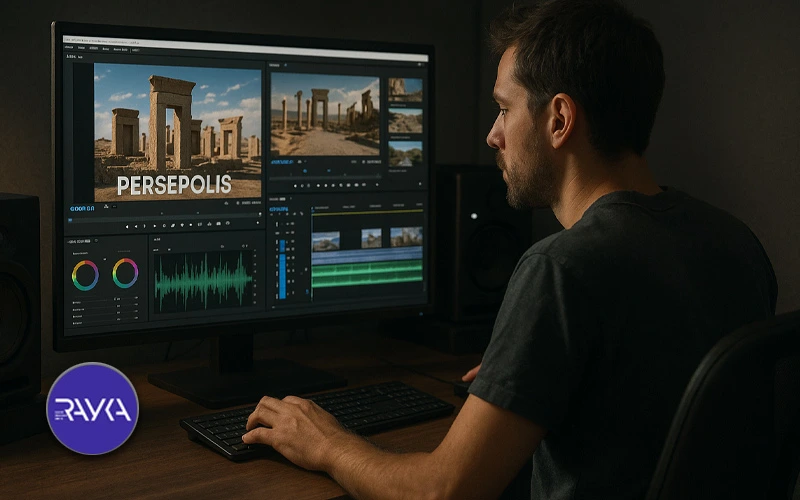
A Documentary story is one of the most fascinating filmmaking styles that blurs the line between reality and fiction. In this genre, the filmmaker breathes new life into real events by using dramatic elements to reconstruct them. As viewers watch a docudrama, they both benefit from factual information and become engaged in the excitement of the narrative. This clever combination is why many documentary filmmakers choose this genre for their historical, social, or personal stories.
A Documentary story is a filmmaking style in which the director creatively narrates real events by combining fact and storytelling. This genre of documentary uses dramatic elements, scripted dialogues, and scene recreations so the audience both receives factual information and enjoys watching a narrative unfold.
The history of documentary story dates back to the early 20th century, when filmmakers began using real-life events as the basis for cinematic storytelling. At first, a documentary story was simply a record of reality, capturing everyday life or historic moments without dramatic elements. Over time, directors explored new methods, blending facts with narrative techniques to create more engaging documentary stories. In the 1920s and 1930s, pioneers like Dziga Vertov and Robert Flaherty shaped the first true documentary stories by combining observation with creative editing. The genre evolved further after World War II, as documentary story became a powerful tool for social commentary and cultural reflection.
Today, the documentary story can take many forms—historical, biographical, or investigative—and is often enhanced by innovations in technology. Modern documentary stories frequently use dramatic reenactments, voiceover narration, and cinematic visuals to connect more deeply with the audience. With the rise of digital media, telling a compelling documentary story has become more accessible than ever. From classic black-and-white films to today’s high-definition productions, the history of documentary story is a journey of blending truth and narrative for impact and authenticity.
A Documentary story has several key features that distinguish it from other types of films. These features include:
A Documentary story can have a profound impact on the audience because it combines real information with an engaging story. This style is especially effective for telling historical events, social issues, or biographies. When a filmmaker goes beyond simply presenting raw facts and instead creates an inspiring narrative, viewers form a much deeper emotional connection to the subject.
Moreover, Documentary story offers greater creative freedom in reconstructing scenes, making even the most complex topics understandable and entertaining for the audience. That’s why many professional directors choose this style to create lasting and memorable stories.
Before starting the process of documantry filmmaking, it’s important to understand the differences between a documentary and a Documentary story. If a director clearly understands these distinctions, they can decide which style better suits their story. The table below provides a summary comparison of these two formats:
| Feature | Documentary Film | Docudrama |
|---|---|---|
| Level of Imagination | Almost no imagination | Fictional reconstruction of events |
| Point of View | Neutral and realistic | Sometimes dramatic point of view |
| Purpose | Education and information | Impact and entertainment |
| Use of Actors | Very limited or no actors | Usually with professional actors |
| Example | BBC Nature Documentaries | Docudrama Series |
Documentary story are produced in various styles, each with its unique characteristics. Choosing the right style depends on the subject, audience, and the filmmaker’s goals. Here are some of the most common Documentary story styles:
In this style, the director reconstructs significant events from the past to give the audience a vivid, tangible picture of history. The use of period costumes and authentic sets enhances the story’s credibility. Historical Documentary stories are often based on reliable documents and accounts and are frequently used to introduce influential figures or major wars.
The social style narrates the everyday issues and concerns of people through a storytelling approach. By recreating certain scenes, the filmmaker delves deeper into social problems or changes. This method enables viewers to empathize with the characters, making many popular social Documentary stories fall into this category.

A biographical Documentary story dramatizes the life of a famous or influential person. This approach allows the director to reconstruct life events in detail and with dramatic storytelling. The audience learns about both the real facts and the narrative atmosphere. Using actors to play the main role is a key feature of this style.
This style examines a specific issue or true case, recreating scenes to boost believability. By blending documentary narration with dramatic reconstructions, complex information becomes more accessible to the audience. Many crime or case-based documentaries use this style, making the narrative highly impactful.
Before choosing a documentry idea, you should pay attention to the point of view. The perspective plays a key role in how information and emotions are conveyed and can completely change the viewing experience. Here are some common and effective points of view:
The impact of documentary story on audiences and society is profound and far-reaching. A powerful documentary story can raise awareness about important issues, inspire action, and even change public opinion. Unlike conventional narratives, a documentary story draws its strength from real-life experiences and genuine emotions, making viewers feel connected to the subject matter. Through careful storytelling, a documentary story brings forgotten voices to the forefront and highlights hidden truths that might otherwise remain unnoticed.
Educationally, a documentary story can simplify complex topics and make them accessible to a broader audience. It can spark curiosity and encourage viewers to seek further knowledge. In the realm of social change, a documentary story often serves as a catalyst, motivating communities to discuss, reflect, and sometimes mobilize for collective action. By documenting reality in an artistic way, a documentary story also preserves cultural memories and showcases diverse human experiences.
Ultimately, the true impact of documentary story lies in its ability to foster empathy and understanding between people from different walks of life. Whether addressing global challenges or personal journeys, a documentary story remains a unique and influential form of storytelling.
Today, AI-powered documentary production has become a major trend in content creation. Artificial intelligence can assist directors and production teams at various stages of making a docudrama. For example, AI tools help analyze data, write drafts of scripts, and generate visuals and sound. Natural language processing models can also speed up the narration-writing process.
In post-production, AI editing software can select the best footage and enhance image or audio quality. Using these technologies accelerates production and saves costs.
If you want to produce a professional Documentary story, the experienced Rayka Mah team can support you with expertise in production and AI-driven documentary filmmaking. RaykaMah offers specialized services in scriptwriting, directing, editing, and creative content creation.
For free consultation and to place an order, just contact us using the form below:
Editing plays a crucial role in making a Documentary story coherent and impactful. If you want to produce a professional work, you need to be familiar with the stages and principles of documentary editing. Here are the main steps:

In this section, I’ll introduce two successful Documentary story from Iran and the world, so you can get inspired and see the amazing potential of this genre:
This film, directed by Joshua Oppenheimer in 2012, tells the story of former members of a paramilitary group in Indonesia who reenact the mass killings of the 1960s. The film blurs the line between documentary and fiction, and thanks to its creative perspective and unique style, it has won numerous international awards.
Directed by Ali Hatami, “Mash Esmaeel” is one of the most outstanding Iranian Documentary stories. The film follows the life of an old villager who struggles to preserve his identity amid the changes of the times. Its poetic vision, narrative style, and natural performances have made this film an inspiring example in Iranian cinema.
Documentary story is one of the most creative and impactful forms of visual storytelling, presenting reality while also engaging the viewer through a narrative. If you want to create content that’s different, deep, and memorable, this style can give your brand or project a unique identity. Don’t forget that modern tools like artificial intelligence now offer extensive possibilities for producing high-quality docudramas.
Yes. Sometimes real people reenact their own stories, or professional actors are used.
Yes, its short and story-driven format is highly practical for platforms like Instagram and Aparat.
When you have a real story filled with emotional and narrative elements.
Yes, because blending fact and fiction demands careful execution and guidance.
They are commonly produced in social, historical, biographical, and even environmental genres.